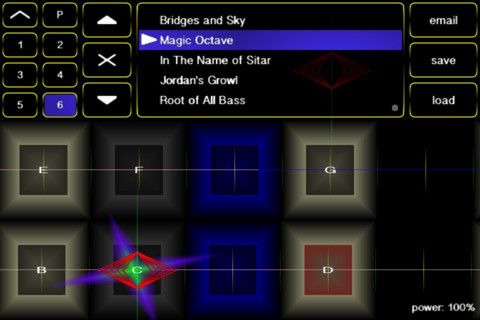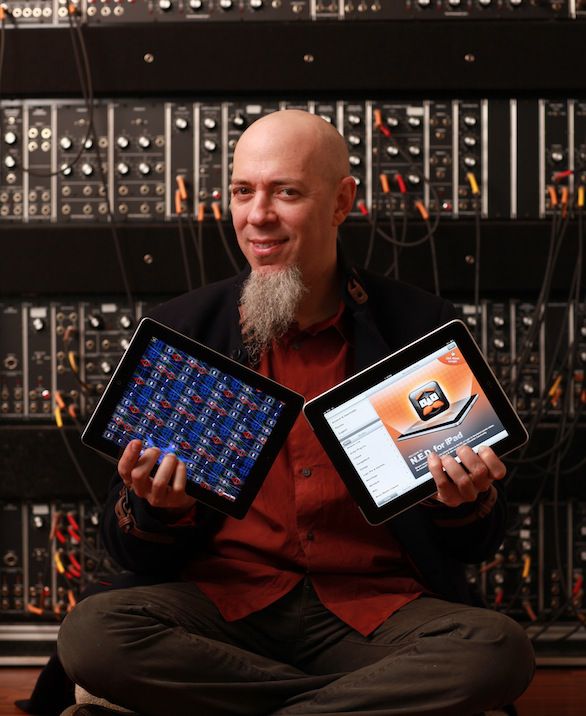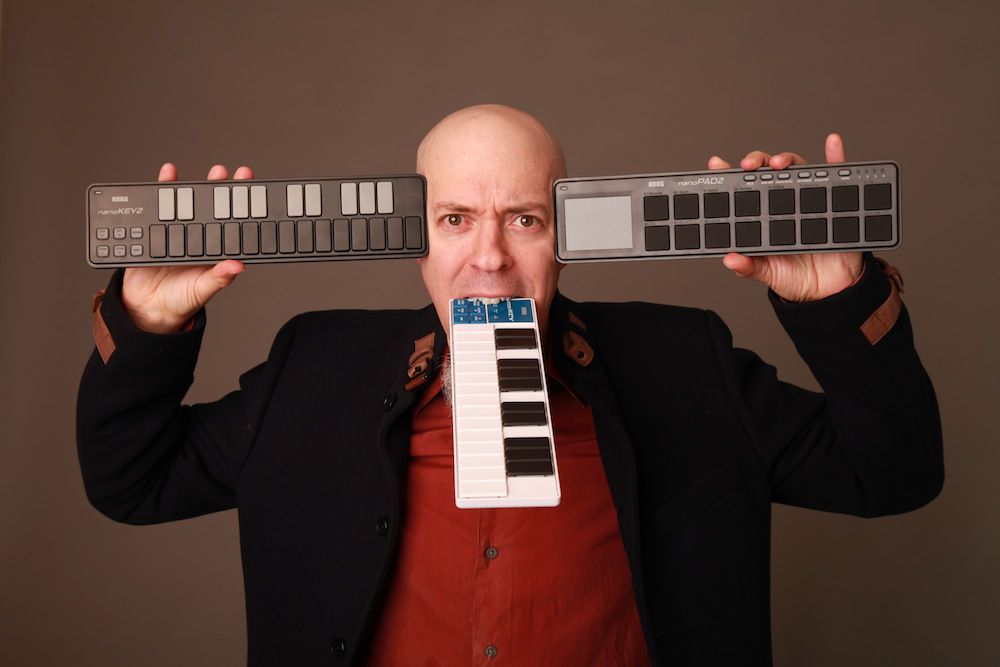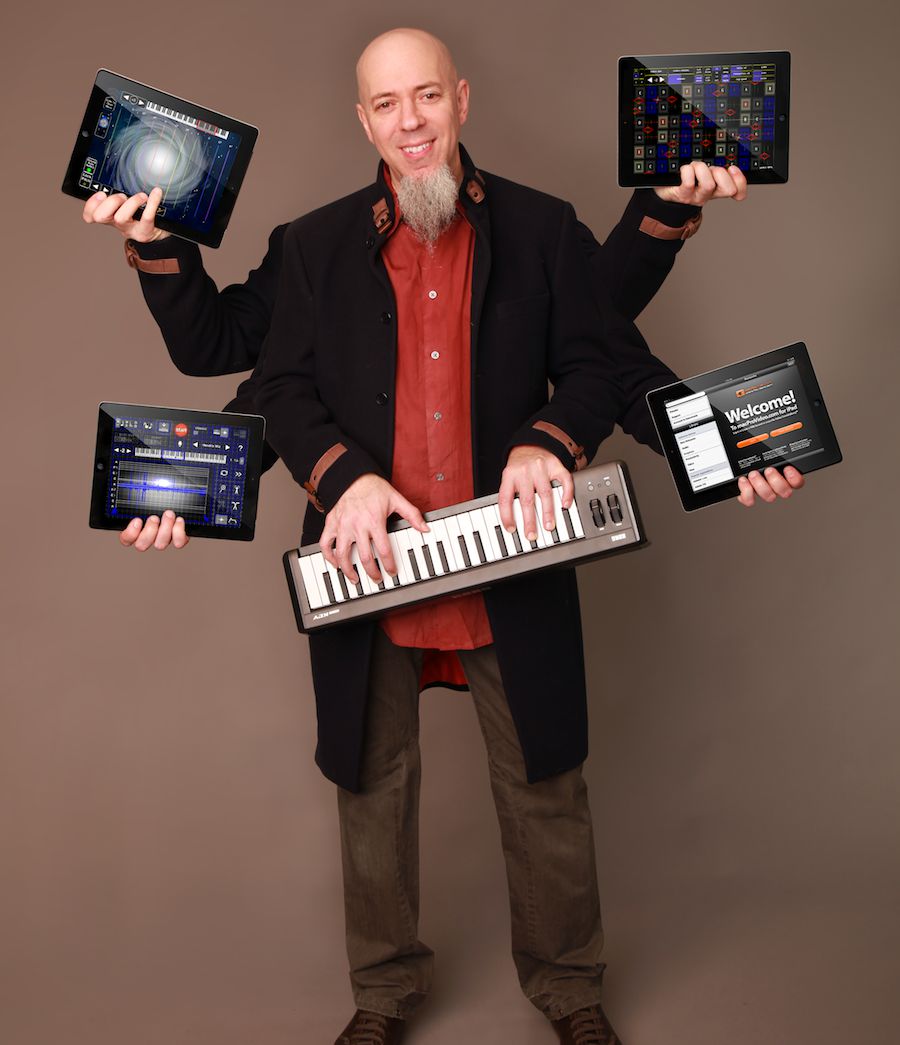There are a handful of musicians that really push the boundaries. For anyone that knows Jordan Rudess, it will come as no surprise that he is one of them! In this exclusive interview with MPVHub Jordan reveals the inspiration behind his popular iOS apps, talks candidly about Dream Theater's creative process, and explores how music technology has changed the way he approaches the music making process.
Rounik Sethi: I've been playing with your new iPad app, Geo Synthesizer. I've been so impressed, there are a whole bunch of things I'd like to chat with you about. So, you've got three iOS apps now: SampleWiz, MorphWiz and Geo Synthesizer?
Jordan Rudess: Actually I have 4 iOS apps. One of these is a photography app called SketchWiz. It was one of the first ones that could turn your images into pencil and ink drawings. We released it after MorphWiz, which as you know is an app that integrates visuals and audio together. When we were experimenting with different ways to do the graphics we had an idea of doing an edge detection thing. I mentioned to Kevin Chartier, my partner, if there was any way to do this in real-time and a couple of days later he made a prototype of SketchWiz. I thought, “Wow, OK. Now we're in the Photography app business!”
We had a lot of fun with that. Maybe one of these days we'll go back to it. But it's a pretty cool app!
RS: In terms of Geo Synthesizer, what was your inspiration behind it?
JR: Geo Synthesizer started out with the wonderful programmer, Rob Fielding. He'd made an app called Mugician a while back that he offered for free. Geo Synthesizer grew out of that. When I discovered Mugician I began talking to Rob and wanted to be involved in what he was doing. We wanted to get it out there via Wizdom Music and really go with it and make it something we all feel is great. What Rob was onto originally was having an iPhone or iPad instrument that was truly playable, not just something he felt was a bunch of ideas squeezed onto a new platform, or an older synthesizer where you're trying to figure out some way to make it work and have fun. In this case Geo Synthesizer is a very playable instrument that I think one could spend a lot of time with and really master and get a lot of satisfaction with much like a piano, guitar or violin. I honestly feel that when I'm walking around with my iPad I have this real playable instrument in my pocket. That's really where the idea comes from.
RS: I love the interface. As you said, it isn't an emulation of another instrument or a traditional keyboard. Do you think finding unique ways to interact with an iPad is necessary to push the boundaries of where the iPad is heading for musicians?
JR: I think it's necessary to view these devices as new and capable instruments. In this case you have this new potential out there. On the developer side we need to think how we're going to turn this into a next generation music instrument. On the consumer/creation side we need to wrap our heads around how we can do different kinds of things with this. Maybe we can be expressive in a different way. I'm interested in primarily seeing how we can use newer devices: an iPad, iPhone or Android device. You know, to really shake things up a little bit. The whole multi-touch concept is still so new for everybody. Now it's also affordable, where in the past it wasn't available for most consumers so people weren't able to be part of that whole movement. Now we can be. Everybody's got an iPhone in their pocket, which they can take out and call up a music app. For me that started out with MorphWiz and the vertical grid concept. I think it's still a very powerful idea where notes are on a vertical grid and you can express a note by pressing somewhere in the line and moving up or down. I love the idea of having space to be able to play a note and then change the parameters with your vertical and horizontal movement. SampleWiz and Geo Synthesizer are also along those lines.

RS: I really enjoyed sampling and bringing it into Geo Synthesizer. It is so easy to launch SampleWiz, record an external sound, and then load it in Geo. I was stunned that it felt quicker than sampling in Logic even with the dozens of key commands programmed into my finger tips!
JR: I love the idea of things being incredibly user-friendly. Most of us have gone from having many hardware synths (in my case a room full of hardware) to a computer that pretty much does it all. My beautiful keyboards are sitting there mainly as museum pieces! I love them still, but really when I go into my studio I call up Ivory, Omnisphere, Alchemy and some Native Instruments stuff and I'm working! MIDI... What's a MIDI cable? I'm starting to forget what it looks like.
When we were producing Geo Synthesizer Rob made a wonderful MIDI Controller (as it doesn't only have onboard sounds) that you can plug into almost anything whether it's your computer or hardware. I said to Rob that the MIDI thing is wonderful but people are going to want to just play this app. I don't want to depend on people connecting to a wireless network or figuring out what interface to use to connect to their synth. It's all great, but when we start talking about that we're talking about another level of user. More and more I really like it when things just work.
RS: So would you say the goal of Geo Synthesizer is to be inclusive?
JR: It really is. It was a goal for me to have Geo Synthesizer to just turn on and play without having to think about MIDI and of course, if you want to it's there for those who want to go deeper. I think that's the goal for the majority of users.
Jordan loves making music and learning music using iPads
RS: So what are your five favorite iPad apps in any genre?
JR: I'm an app-oholic, for sure. Well, I've really been enjoying the new Animoog app. I'm also a big fan of this company called Sound Trends. They have an app called Meta DJ which shakes up the DJ world with some cool stuff. Integrating a lot of their technology you can do things like bring in an iTunes song and quickly change the tempo of it to match an onboard synthesizer. You can coordinate many different worlds inside this one app. I just love what they're doing.
On the video/photography side I've been using an app called PhotoToaster lately. That's super and another one I really like is Big Lens that allows you to do depth of field really easily using multitouch. OK, There are lots of great apps, but another that springs to mind is Vocal Shapes which is simple and beautiful representation of audio with a visual display. It uses some cool mathematics to generate the visual patterns based on what's happening in the audio domain.
RS: That's interesting, because one aspect of SampleWiz and Geo Synthesizer that's always impressed me is how the audio is accompanied by cool visuals, both in a functional and aesthetically pleasing way.
JR: I'm so interested in the connection between the visual and the audio. When I came up with the idea of SampleWiz I was thinking of the days when the Casio SK-1 came out, which was the original inexpensive sampler that was so much fun. It basically brought sampling to the masses. So, I was thinking that on an iPhone you could bring it to the next level and do a similar thing. I like to spread the word about the joy of sampling. Some people who aren't as dialed into that world should really discover it because it's super-fun.
RS: Which of your apps have you used on the latest Dream Theater album, A Dramatic Turn of Events ?
JR: I used MorphWiz on the new album. I was going to use SampleWiz but it wasn't quite cooked at the time of recording. So now on my keyboard rig I have this wonderful arm that comes out of the rotating stand and I have my iPad on it and run SampleWiz and MorphWiz—so I use them both in the show. Geo Synthesizer has not been integrated in the show yet as it was introduced later on. But it definitely will be.
SampleWiz works so well live because there might be another sound effect or sound I need to take off my master keyboard. Also the whole idea behind how MorphWiz and SampleWiz can be played is that you have access to sliding functionality that you really can't do on a keyboard. I guess it sounds selfish, but I kinda made these apps for myself! I wanted to make something that could do some really cool things. I think that when somebody has an idea they know is going to bring themselves so much joy, then it usually can translate to somebody else and they can experience that joy, too.
RS: Do you have a favorite song from A Dramatic Turn of Events?
JR: Some days I'll wake up and be in an Outcry mood and another day it'll be Beneath the Surface. The prog guy in me really loves Breaking all Illusions. But then Outcry is also a big prog epic, and if you'd have asked me three months ago I'd probably have pointed that one out first. But after playing live on our tour there's something about the reaction to Breaking All Illusions that I love. I think it's epic but it's in major. In bands like ours we can gravitate towards the heavier sounds with minor or fifths. In Breaking All Illusions there are huge choruses which are very open and very major and end up being very uplifting. So not only is it fun to play and a real journey, but you can see people responding to it.
RS: When listening to the album it's clear that a lot of care and attention has gone into the production. Tell us about the recording and production process.
JR: It's interesting. In the times we live in, production has the capability of becoming very refined and it's possible to tweak things and over-produce it, and end up with something that doesn't sound human. That can be cool—as we know—or not, depending on the musical result you're looking for.
When making a Dream Theater album, we have really high production values. We like things to be right. We're the opposite of the Grateful Dead approach where you play and it's maybe a little bit out of tune, it's loose, vibey and cool. You know, I love that. But we're more about playing it in unison and making it really tight. For example, when John Petrucci and I are working on a unison line in Lost Not Forgotten, where it's an extended, super-fast unison between a guitar and keyboard, we take our time. First of all we have to practice it a lot. When we record it we'll listen with headphones and we might find a part which is rushed a little bit and we'll go and fix it.
It's like painting a picture. We want it to look right. To us being meticulous and doing it right is part of what makes the difference between Dream Theater and other bands that do similar styles of music. We spend a lot of time practicing our instruments. If you come backstage before a show you'll see we're not sitting there having a party or drinking beers. John Petrucci is there with his metronome on, playing scales; John Myung is doing his trills in the corner; Mike Mangini is playing 17 against 13 and triplets with his feet; and I'm trying to match his 17 with my right hand and his triplets with my left... It's a music workshop! So when it comes to the actual recording, it's all about painting this picture so we can all say at the end: "That's the vision of what we wanted to create and it feels right."
RS: Mike Mangini is relatively new to Dream Theater. Has his arrival had an impact on the band's musical direction?
JR: He's had a major impact on Dream Theater as a whole. Mike is a lovely person who just comes from the heart. He's fun and inspiring to be around. Beyond that he is a phenomenal drummer and we feel like we've found a true soul mate in him. He's someone who likes to practice maybe more than we do!
That being said he wasn't present for the writing session of the album. It was a major album for us especially because Mike Portnoy had left and we felt like we were aware of where we needed to go. John Petrucci and I are used to writing most of the music and we wanted to keep it that way for this album. We kept that dynamic and we used Logic and drum sounds and software to get the job done, like a composer does.
The end result was Mike Mangini came in to the studio and really appreciated the fact we'd given him something to start out with. So, he was very easy to work with and had a lot of ideas that stemmed from our drum sketches and came up with his own really great parts.
Mad about MIDI: Jordan can play some tasty riffs on his keyboards
RS: You've mentioned the use of Logic and drum machines during the writing process. Is Logic the DAW the band use to share ideas?
JR: Logic is the DAW of choice amongst all of us in the band. Mike Mangini is more of a Pro Tools guy. Paul Northfield, who is our engineer, is also a heavy Logic guy. When we record in the studio he tends to use Pro Tools I think, just because it's an industry standard when recording and moving files around.
RS: Did you rely mainly on hardware or software synths when creating the album?
JR: I use all the technology that I can put my hands on that inspires me... anything from Vienna Symphonic to Native Instruments' Reaktor to Omnisphere. But, I also have a lot of hardware instruments and when writing I make use of these because I value being able to put my hands on sounds very quickly. So to play a mellotron, then immediately play an organ, then a brass sound... I ended up setting up the opposite of what I do live: a multi-keyboard setup around me which is really fun. Then we play songs and as we try things I don't have to sit there and load things into my Mac.
Of course, the other side of that is after laying down the tracks I wonder how the hell I'm going to do it live!! That's a big process. First, I've played Omnisphere and Alchemy, samples from Kontakt, etc. Then I'm not taking all of it on the road, I'm actually taking the Korg Kronos which plays 95% of my show. Somehow I have to make it all happen. I really like being able to focus in and have all sounds coming from where my hands are. I don't want to be jumping around. From a show business point of view, a little bit of that is a good thing. From a musical point of view, isn't it better if I can hold my hand on a chord, press a pedal and then the next note I play is the next sound? I care more about being able to connect one musical phrase to another than doing the entertainment aspect. That said, I do care for the show a lot and you should see my latest keyboard stand/show (based on hydraulics)!
Ever wondered how Jordan performs so many sounds live simultaneously..? Now you know!
RS: That's excellent. So you've had a long and fruitful relationship with macProVideo.com. How did this come about?
JR: First of all I discovered Steve H's Logic tutorial-videos and learned how to use a lot of cool stuff! I got the feeling that macProVideo was really on top of the game even back then. And now I've been following the company and I'm honestly always impressed that macProVideo is pushing the boundaries, like this digital and print magazine. You guys are totally doing it!
And personally I can walk around anywhere and on my iPhone/iPad get access to all the tutorials and be able to learn about whatever I need, like Logic or Native Instruments. You make it easier for everybody to learn about technology. I value macProVideo a lot because I feel you guys are doing the right thing and you're all really nice people—and I care about that, too!
RS: Thanks Jordan! Good luck with the rest of the Dream Theater tour!
JR: And thank you. Although I couldn't be part of the NAMM show this year, I'm looking forward to being part of the show through the MPVHub Audio Magazine! Thanks.
Find out more about Dream Theater: http://www.dreamtheater.net/
Discover Jordan's Apps: http://www.wizdommusic.com






 © 2024 Ask.Audio
A NonLinear Educating Company
© 2024 Ask.Audio
A NonLinear Educating Company
Discussion
Want to join the discussion?
Create an account or login to get started!